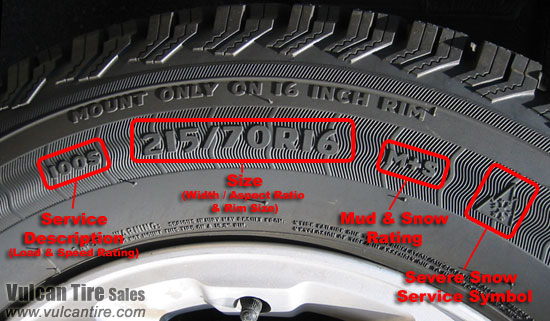Step 2. Determining what Replacement Tires meet your Vehicle's Requirements
There are two important parts to your tire size; the size itself and the service description:
1. Size The tire size is made up of three numbers. The first number is the tire "width" (listed in millimeters) followed by a "/"; second, is the "aspect ratio" (the sidewall height listed as a percentage of the width) followed by a "R"; then finally the rim size (rim diameter, listed in inches). When determining what tire you need all three of these numbers (width, aspect ratio and rim size) should match exactly.
2. Service Description The tire service description is made up of two parts. The first is a two or three digit number indicating the "load index" of the tire. This determines the weight the tire can carry. When replacing tires, you should select a tire with the same or higher load index than what is listed on the tire information placard (not necessarily what is listed on your current tires).
Following the load index number is a letter called the "speed rating". This letter determines the top speed this tire can handle. (In addition, higher speed ratings usually mean better handling.) In general, you should select a speed rating that indicates the same top speed or higher than what is listed on your tire information placard (not necessarily what is listed on your current tires). In the case of snow tires, it is ok to use a lower speed rating than what your vehicle indicates. (Note that speed rating top speeds do not follow alphabetical order,
click here for speed rating values.)
 Sponsored Links
Sponsored Links
